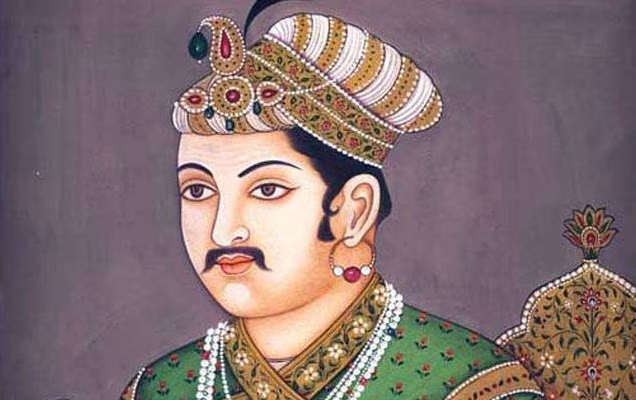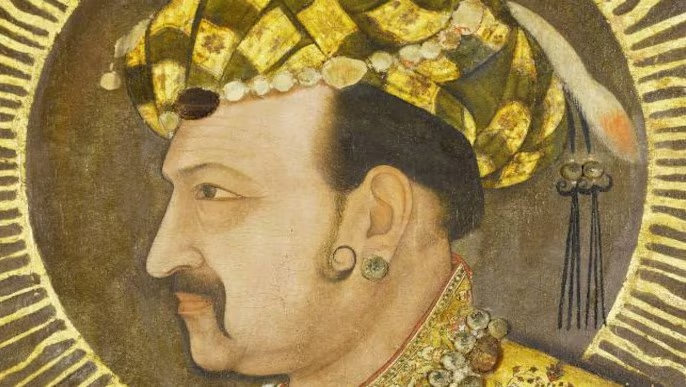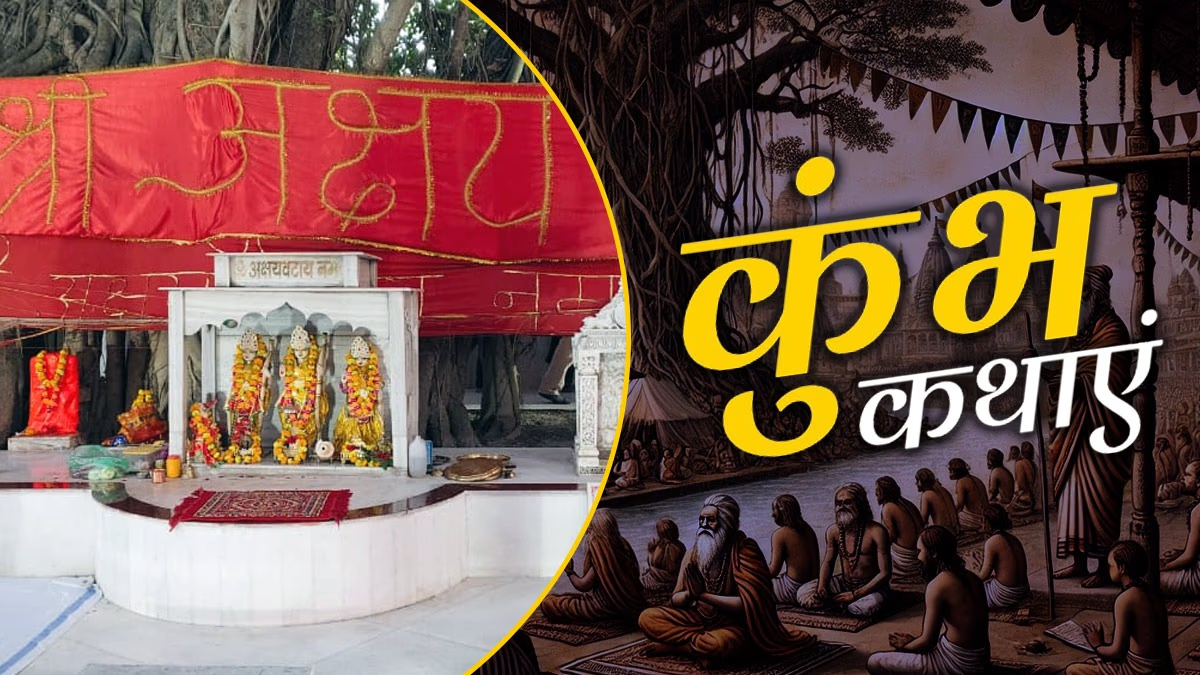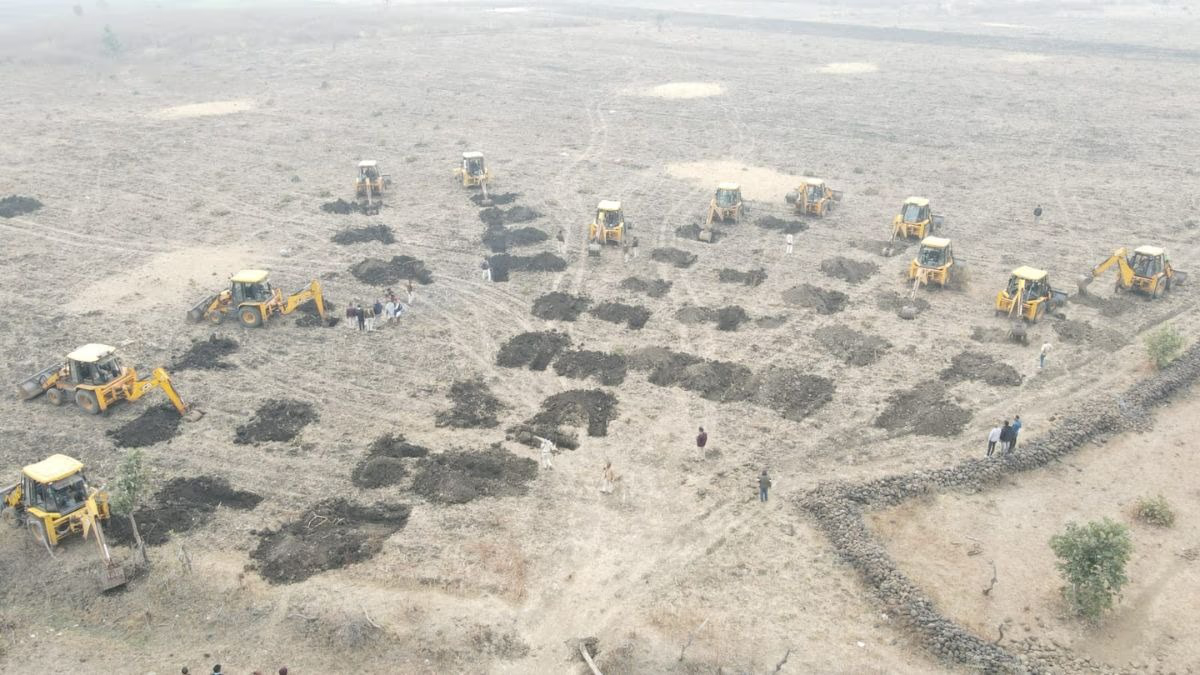In Prayagraj, amidst the convergence of sangams at Mahakumbh 2025, another ancient pilgrimage site has flourished since ancient times, enhancing the sanctity of this land. By the banks of the Yamuna River lies a historical fort, and inside its walls grows the resilient Akshay Vat, a tree whose recorded history goes back 400 years. Legend states it to be indestructible. The tree currently stands in the Patliputra Temple, its roots spreading grandly. Its historical and mythical significance is deeply intertwined.
Lord Ram and the Establishment of Shiva
History recounts attempts by Muslim invaders and the Mughal Emperor Jahangir to destroy this tree, yet it emerged anew every time. Lord Ram, Sita, and Lakshman rested under its shade during their exile. Ram consecrated Lord Shiva here with flowing water that reached the roots of Akshay Vat and merged into the confluence.
A Witness to Apocalyptic Events
Ancient texts claim the tree existed from the beginning of creation and witnessed multifold apocalypses. Padma Purana also speaks of it. Within today's fort lies the temple of Patalpuri and this mystical tree. It is said to be blessed with the presence of both Vishnu and Shiva, making it a place of divine confluence.

Source: aajtak
The Tree of Knowledge
Among India's ancient wonders, Akshay Vat and the Patalpuri Temple hold an eminent position. The name Akshay Vat signifies the eternal banyan tree, a symbol of wisdom and life's indomitable spirit even through cosmic dissolution.
Goddess Sita Grants Eternal Life
According to another legend, after King Dashrath's demise, Lord Ram performed rites while King Dashrath appeared at Akshay Vat, asking Sita for food. She offered him sand balls as a ritual sacrifice in Lord Ram's absence. Later, Sita assured Lord Ram that the ceremony was complete, and the tree affirmed this with its rustle, earning Sita's blessing of eternal life to the tree.
Temple of Ancient Glory
Patalpuri is an underground temple tracing its roots to the Vedic era. As one of India's oldest surviving temples, it boasts 84 by 49 feet dimensions with 100 columns standing 6 feet high. It houses various deities like Dharmaraj, Ganesh, Kali, Vishnu, Shiva, and more.

Source: aajtak
Attempts to Destroy the Indestructible
The tree faced numerous assaults over time. Emperor Akbar, upon reaching Prayag in 1575, developed a fondness for the land and its essence and erected a fort on the banks of the Yamuna incorporating the ancient temple, impacting Akshay Vat's domain.
Relentless Trials by Jahangir
Inherited by Jahangir, the fort saw expansions impacting the sacred grounds of Patalpuri Temple and the tree. Jahangir was astonished to learn about traditional practices involving sacrificial jumps from the tree into the Ganga, prompting significant restrictions.
Accounts by Al-Biruni
Persian scholar Al-Biruni recorded in 1017 AD the awe of witnessing people leaping into the Ganga from the Akshay Vat as part of cultural mores. His observations formed part of his writings known as 'Tarikh al-Hind'.

Source: aajtak
Chronicles by Xuanzang
Xuanzang's travel diaries also speak of the tree's expansive reach, sheltering numerous relics of souls seeking heavenly departure from its branches.
Rebirth from Ashes
Despite Jahangir's actions of felling and shielding the tree with iron, its sprouts emerged resiliently. Even attempts to incinerate its roots and bury it were futile, as the indomitable tree rose again, pathing its way through adversities.
Restricted Access by Aurangzeb
The sacred tree remained out of reach for many during Aurangzeb's reign, as the emperor kept its location fortified. Eventually, the Peshwa Bajirao negotiated reopening access during Shah Bahadur's later reign, restoring pilgrim access briefly before British-imposed restrictions.
A Public Haven Once More in 2019
Due to security reasons, native access was limited for decades until 2018, when significant restoration was initiated post a survey by General Bipin Rawat and Minister Nirmala Sitharaman. Improvements enabled public visitation from 2019 onwards.




